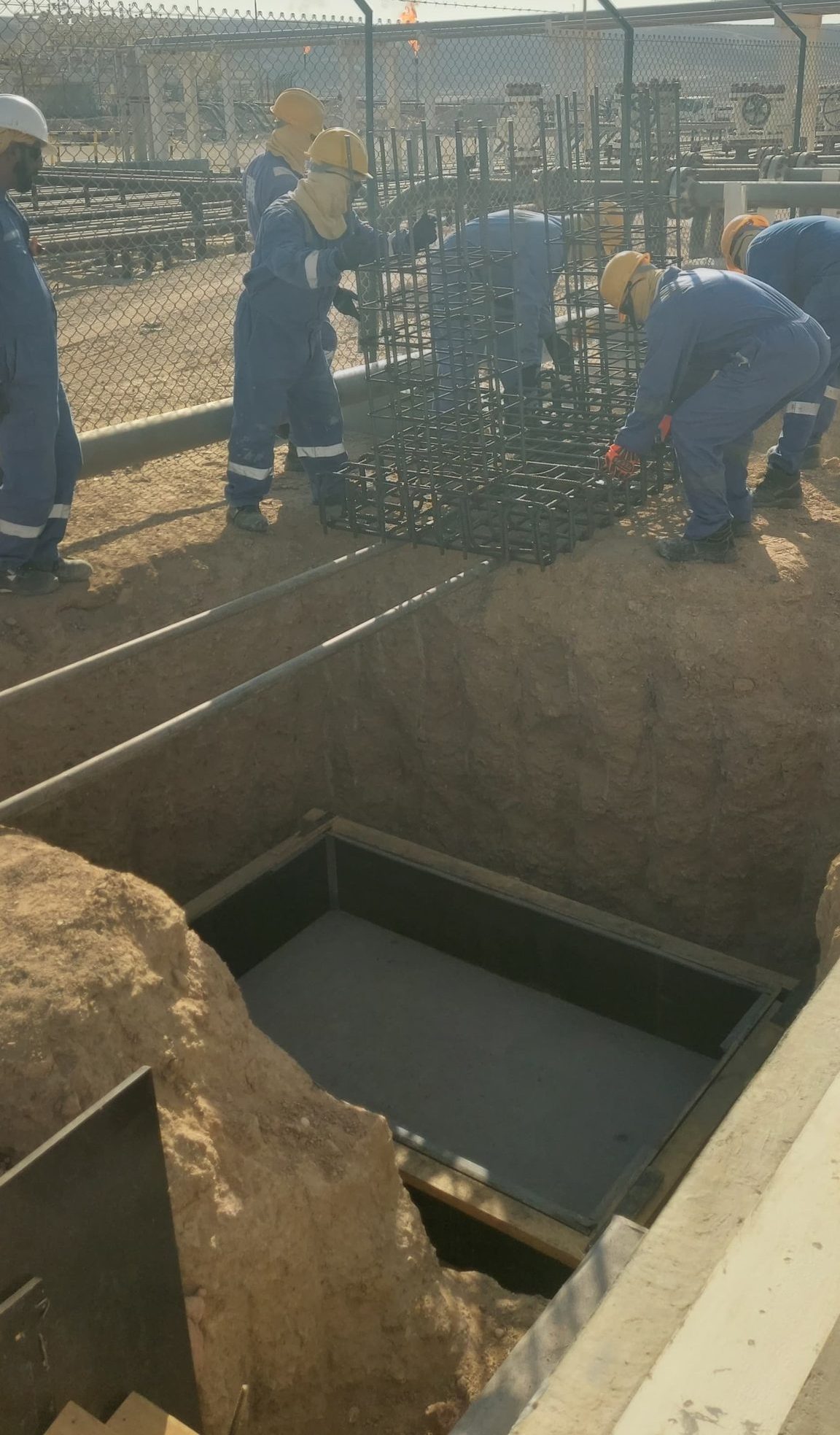PIPELINE CONSTRUCTION

I.Pre-construction survey: Before construction begins, crews survey environmental features along
proposed pipeline segments. Utility lines and agricultural drainages are located and marked to prevent
accidental damage during pipeline construction. Next, the pipeline’s centerline and the exterior right of
way boundaries are staked.
II. Clearing and grading: The pipeline right of way is cleared of vegetation. Temporary erosion control
measures are installed prior to any earth-moving activities.
III. Trenching: Topsoil is removed from the work area and stockpiled separately in agricultural areas.
Crews use backhoes or trenching machines to excavate a pipeline trench. The soil that is excavated during
ditching operations is temporarily stockpiled on the non-working side of the trench.
IV. Pipe stringing: Individual joints of pipe are strung along the right of way adjacent to the excavated ditch
and arranged so they are accessible to construction personnel. A mechanical pipe-bending machine bends
individual joints of pipe to the desired angle at locations where there are significant changes in the natural
ground contours or where the pipeline route changes direction.
V. Welding and coating pipe: After the stringing and bending are complete, the pipe sections are aligned,
welded together, and placed on temporary supports along the edge of the trench. All welds are then
visually, and radio graphically inspected. Line pipe, normally mill-coated or yard-coated prior to
stringing, requires a coating at the welded joints. Prior to the final inspection, the entire pipeline coating
is electronically inspected to locate and repair any coating faults or voids.
VI. Lowering pipe in and backfilling: The pipe assembly is lowered into the trench by side-boom tractors.
The trench is backfilled using a backfilling or bladed equipment; no foreign materials are permitted in the
trench.
VII. Testing: After backfilling, the pipeline is hydrostatically tested following federal regulations. Test water
is obtained and disposed of in accordance with applicable federal, state and local regulations.
VIII. Restoration: Our policy is to clean up and restore the work area as soon as possible. After the
pipeline is backfilled and tested, disturbed areas are restored as close as possible to their original
contours. Restoration measures are maintained until the area is restored, as closely as possible, to
its original condition.
IX. Special Land Considerations: Projects are designed to minimize the impact to residential areas, as
well as agricultural lands. Land disturbed during the construction period will be returned to as
close to original condition as possible. Agricultural lands will be properly restored using approved,
modern mitigation techniques designed to ensure full productive reuse of the agricultural lands.
